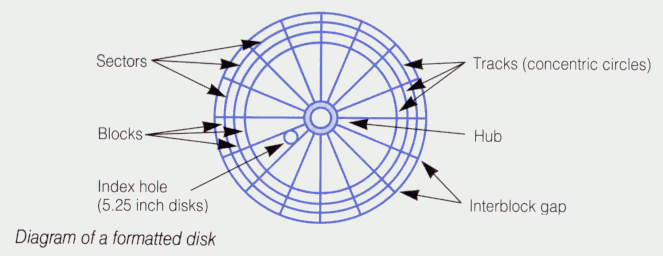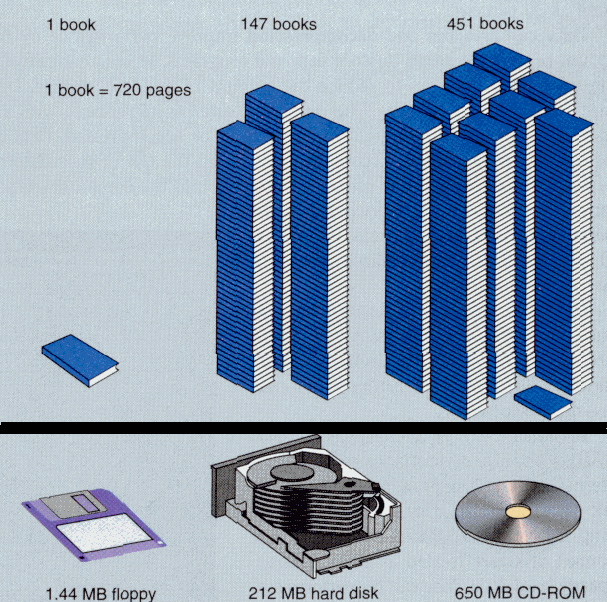Formatting A Disk
To store information on a disk (floppy, hard, zipp or jaz) the disk must first be formatted. This sets up the magnetic disk so information and data can be recorded on to it and retrieved from it.
The disk is divided into sectors. These look like pieces of pie. It is also divided into tracks. These look like the rings on a tree. The intersection of a sector and a track is called a block. Information is stored in these blocks.

Each track and sector is numbered or lettered (tracks are usually numbered, sectors are identified by letter). One block is set aside as an index to the disk. Whenever any information or data is stored on the disk, its location is recorded in this index. The computer always reads the index first to find where the data or information is stored on the disk. It is like looking up a catalogue in a library.
When you format a floppy or hard disk, you are setting up (or re-setting up) these tracks and sectors. The index is erased. The computer can not use the index to find the location of the data and information on the disk.
You can buy disks that are already formatted. Disks that are not formatted must be formatted before you can save information and data on them.
Storage Capacities
Floppy Disk: 1.44 Mb (Double Sided, High Density).Hard Disk: Various
CD-ROM: 650 Mb (12 cm diameter)
Zipp disk: 100 Mb.
Jaz disks: 1Gb.
DVD-ROM disks can not be formatted. One single sided DVD-ROM holds 4.7 Gb. In the future, double sided double layer platters will hold 17 Gb per disk.
Comparison of Storage Capacity of Floppy, Hard and CD-ROM disks
